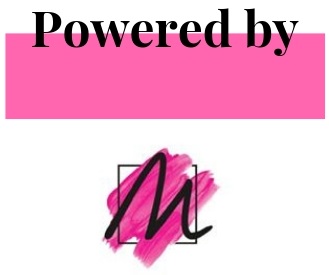As the models ambled out one by one – muscular and tall, hunched over and scrawny, squat and bow-legged – the point was clear: This was not a runway show about idealized men.
No Adonises. No rock stars. No bearded gentry.
These guys were pierced and tattooed, not artfully but rudely. Tattoos marred cheeks and scribbles of ink framed dark eyes. These were the tough guys that one might pass on the street – the working-class guys who return home with their heavy chinos caked with dried mud and paint, the day labourers who do the back-breaking jobs that need to get done and that few others have a willingness to tackle, the paycheck-to-paycheck men.
In the world, as sketched out by designer Willy Chavarria, they are black and brown men. And they move through the streets with a scowl and a grimace. Life is tough; life is exhausting. But they are thick-skinned. So they carry on.
To some degree, that steely outer shell – along with all the familiar racist tropes -has wrongly and dangerously led to a stubborn perception outside their community that they are to be feared. But Chavarria is not having it. Not today.
Chavarria, who is Chicano, infuses his high-end collections with his cultural backstory and a soulful celebration of the humanity of minority men. They will not be dehumanized on his watch.
The fall 2018 runway season opened on Monday evening with a sampling of menswear shows, a multitude of cocktail gatherings and assorted panels mulling topics ranging from diversity in retail to diversity in social media.
The question seems to be this: Who gets to tell the fashion story? Which is essentially like asking: Who gets to write the cultural history?
In particular, culture and diversity were a point of debate and celebration uptown, where Harlem’s Fashion Row – an organization that highlights minority designers – marked Black History Month with a dinner and public conversation featuring Daniel “Dapper Dan” Day.
Day is the guerrilla fashion artist who, in the 1980s, turned trademarked Gucci and Louis Vuitton logos into his own bespoke fashion statements. He recently formed a partnership with Gucci that has him settled into his own atelier in Harlem.
Day focused on encouraging young black designers to bat down internal self-doubt and self-imposed limitations. Meanwhile, Chavarria was busy tackling outside prejudice. Both of these conversations came on the heels of a recent Twitter campaign: #blackmensmiling.
Back to Back #BlackMenSmiling . pic.twitter.com/XkkHeGfXc3
— • TRAYMFNBILL$ (@traybills) February 4, 2018
The hashtag was based on a simple idea: normalize happy. Normalize the image of black men as three-dimensional, joyful, life-affirming individuals. Cast them in the light and away from the fearsome shadows.
Chavarria’s men may not have been smiling, but they were no less emotional. Tears streaked their face. Chavarria cracked the tough-guy facade and let a little bit more of their story spill out. Chavarria normalized sadness.
His silhouettes are rooted in work shirts and cargo pants, but his roomy overcoats have a luxurious swagger, his bomber jackets are broad-shouldered and his trousers are the antithesis of rocker lean.
Chavarria’s presentation places his clothes in a particular context, and that context tells his audience something about the men whose style he highlights. For fall, he took his audience into a neighbourhood with its own style creed.
In the past, his presentations have explored the role of race within the criminal justice system by transforming his runway into a prison yard filled with models of colour. He has invited audiences into a leather bar and filled his runway with hyper-masculine black and brown men.
It’s not easy to weave a narrative on the runway or even to sketch out a thesis there. The effect can easily read as pretentious, false or simply silly. That was the case with a brand called Death to Tennis. (Yes, the name of the brand could benefit from a re-think.) The designers juxtaposed floral fabrics with classic menswear shapes. Many of the clothes were compelling.
But the collection was sandwiched between a cacophonous opening video and finale that consisted of two white-coated models dragging a third floral-bedecked model down the runway in some sort of reference to war, annihilation and the end of fashion. Yeesh.
For Chavarria, the story is simple. The clothes are an expression of who he is, and he is not unlike many, many other men.
To mark the end of his show, Chavarria sent a brown-skinned man down the runway – his chest was bare. Nestled against it was a newborn baby with a head of dark curly hair and skin the colour of chocolate. The baby did not cry or squirm, but rested peacefully against the man’s chest and wrapped in his large hands.
The image spoke of nurturing, kindness and care. They are all strands in the story of Chavarria’s men – details that are too often omitted.





